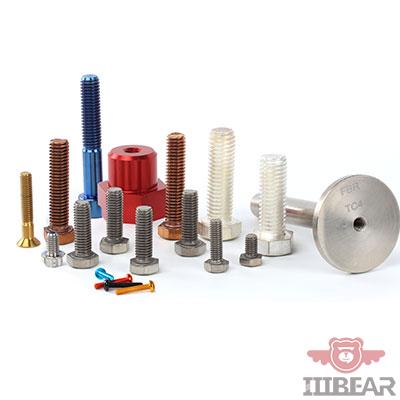The fastener industry is continuously evolving, driven by technological advancements, market demands, and the shift toward sustainability. As we move into 2024, several trends are set to shape the future of fastener production, application, and usage across various industries. In this article, we'll explore the top five trends to watch in the fastener industry, helping businesses and professionals stay informed and ahead of the competition.

1. Adoption of Sustainable Fastener Materials
Sustainability continues to be a key concern across industries, and the fastener industry is no exception. In 2024, there is a growing emphasis on using eco-friendly and recyclable materials for fasteners. Companies are increasingly opting for materials like stainless steel, aluminum, and high-strength alloys that are not only durable but also have a reduced environmental impact. Innovations in corrosion-resistant coatings and eco-friendly manufacturing processes are also gaining momentum, enabling fastener manufacturers to meet sustainability goals while maintaining product quality.
For businesses in the fastener sector, this trend offers an opportunity to align with global environmental standards, attract eco-conscious customers, and reduce their carbon footprint.
2. Smart Fasteners for Automation and IoT Integration
With the rise of automation and the Internet of Things (IoT), smart fasteners are becoming more common. These fasteners are equipped with sensors and wireless communication capabilities, allowing them to transmit data to monitoring systems. Smart fasteners are particularly useful in industries like aerospace, automotive, and renewable energy, where precise assembly and real-time data are crucial.
In 2024, the integration of smart fasteners into industrial systems is expected to expand, offering enhanced tracking and monitoring capabilities, predictive maintenance, and improved overall efficiency. The trend also paves the way for innovations in quality control and supply chain management, helping manufacturers identify potential issues early and streamline production processes.
3. Increased Demand for Custom Fastener Solutions
As industries like automotive, construction, and electronics continue to demand specialized components, the need for custom fastener solutions is on the rise. Companies are increasingly seeking tailored fasteners to meet specific design and application requirements. Custom fasteners allow manufacturers to improve assembly processes, reduce waste, and enhance product performance.
The ability to offer customizable options for clients, whether in terms of material selection, size, or design, is becoming a competitive advantage. In 2024, fastener suppliers that provide personalized solutions will have an edge in an increasingly diverse marketplace, where standard solutions often don’t meet the complex needs of modern industries.
4. Automation in Fastener Production
The drive toward automation is significantly influencing fastener manufacturing processes. In 2024, more fastener production lines will integrate robotics, automated quality control, and AI-driven systems to increase production efficiency, reduce labor costs, and ensure consistent product quality.
Automation in fastener manufacturing offers several benefits, including the ability to produce complex fasteners with high precision and speed. Additionally, automated systems can handle large production volumes without compromising quality, meeting the growing demand from industries like automotive and aerospace.
As these technologies evolve, businesses that invest in automation will likely experience reduced lead times, greater flexibility, and increased profitability.
5. Rising Focus on Fasteners for Renewable Energy Projects
The global push toward renewable energy has created significant opportunities for the fastener industry. With an increase in wind, solar, and hydroelectric power installations, there is a rising demand for durable and reliable fasteners that can withstand extreme environmental conditions. In 2024, the fastener market will see continued growth in this area, with innovations in corrosion-resistant coatings, high-strength alloys, and fasteners designed to withstand the harsh conditions of renewable energy applications.
For manufacturers, this trend means tapping into a rapidly growing sector with long-term potential. By offering high-quality, specialized fasteners for renewable energy projects, businesses can position themselves as key suppliers to a booming industry.
Conclusion
The fastener industry in 2024 is poised for significant innovation and growth. From the adoption of sustainable materials to the integration of smart technologies and increased demand for custom solutions, these trends will shape the future of fastener production and application. As businesses navigate these changes, staying informed about these key developments will help them remain competitive and drive success in an increasingly dynamic market.

